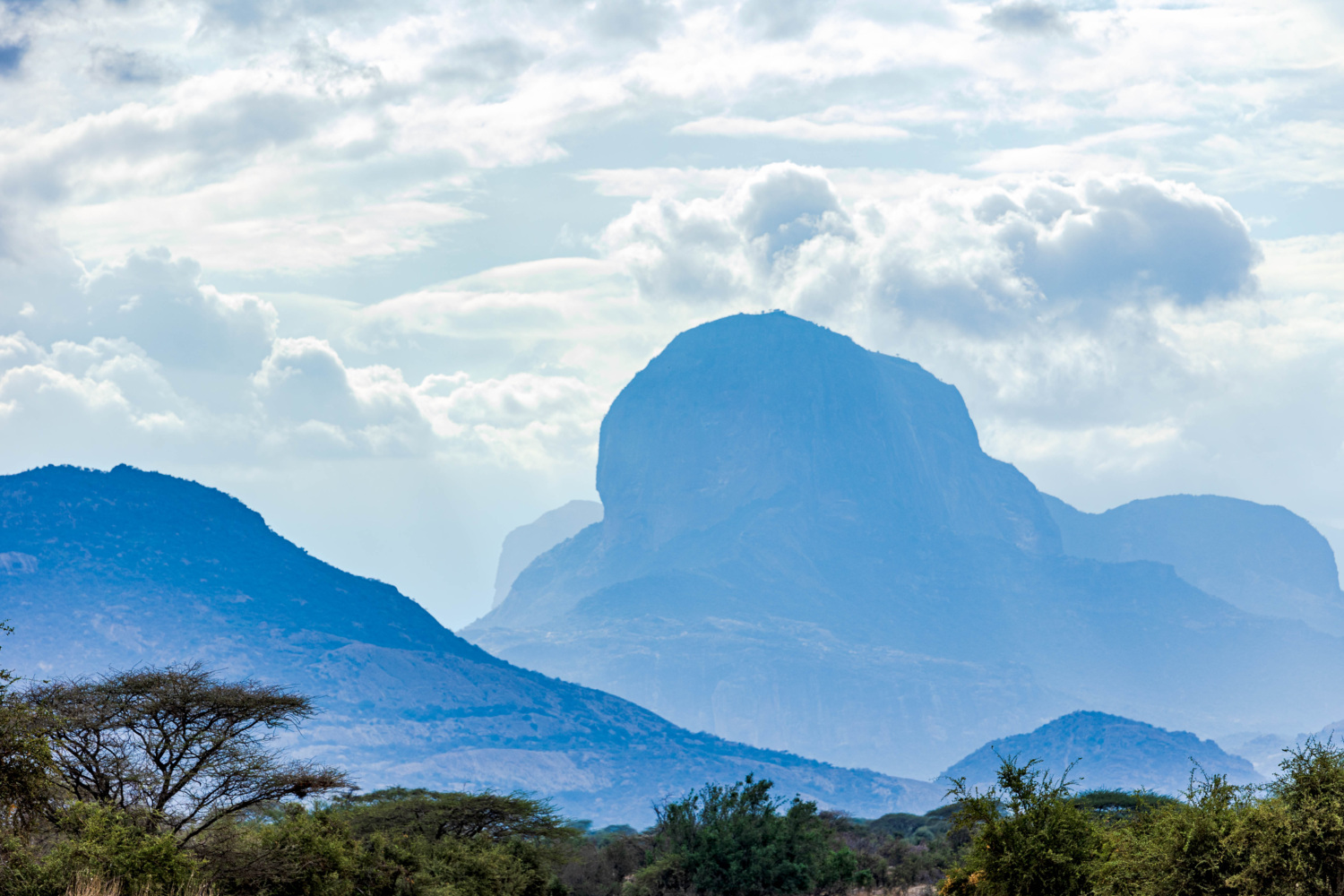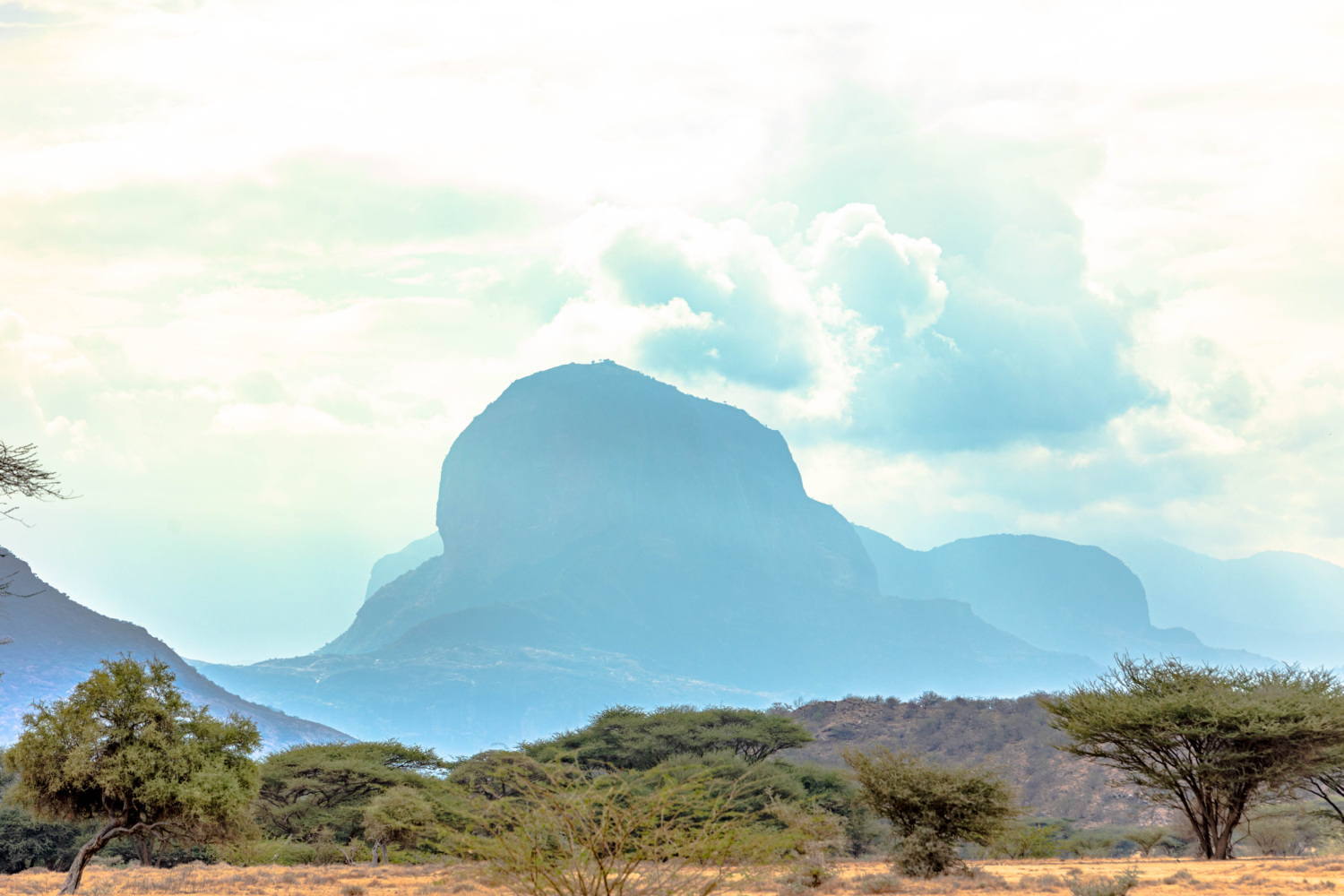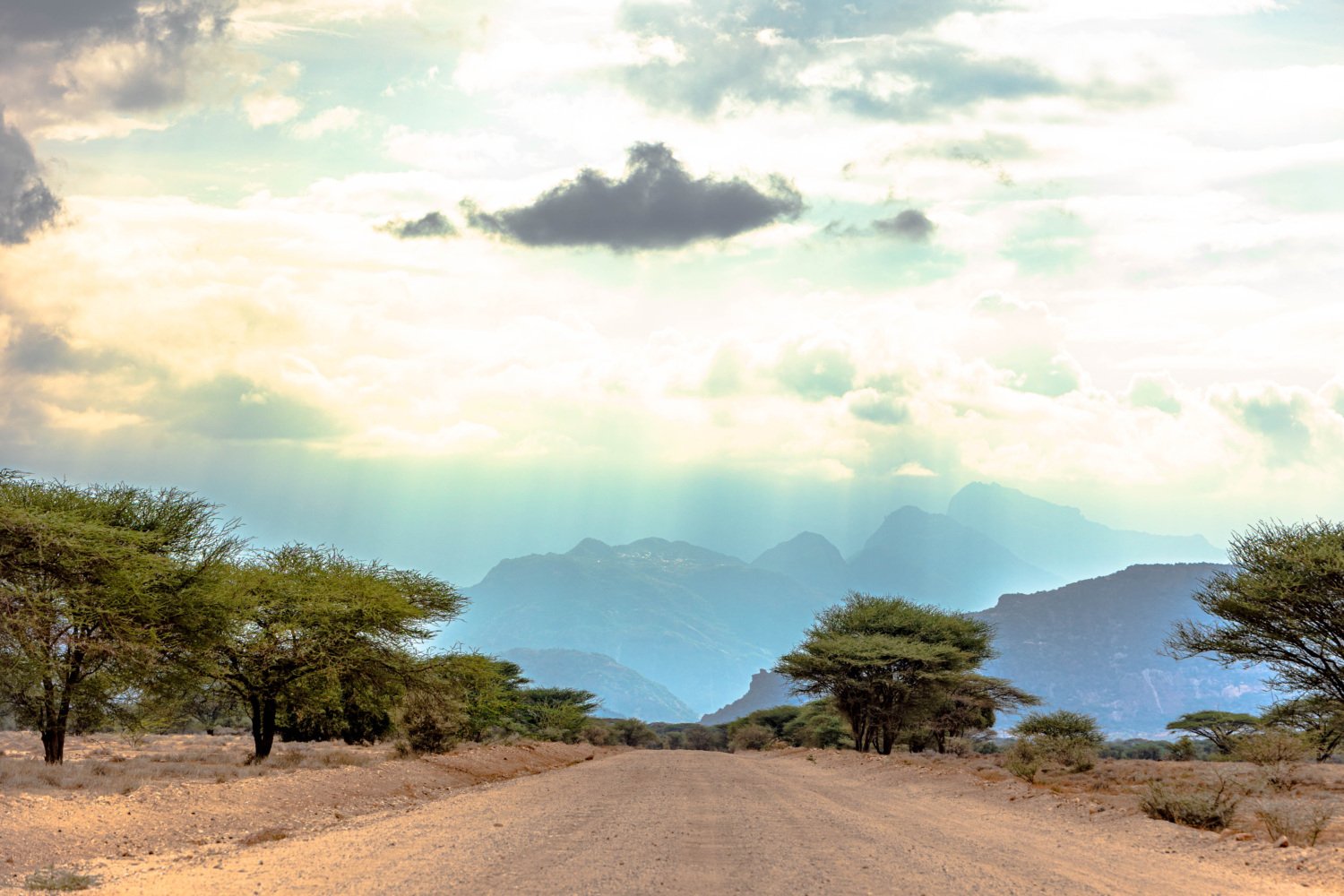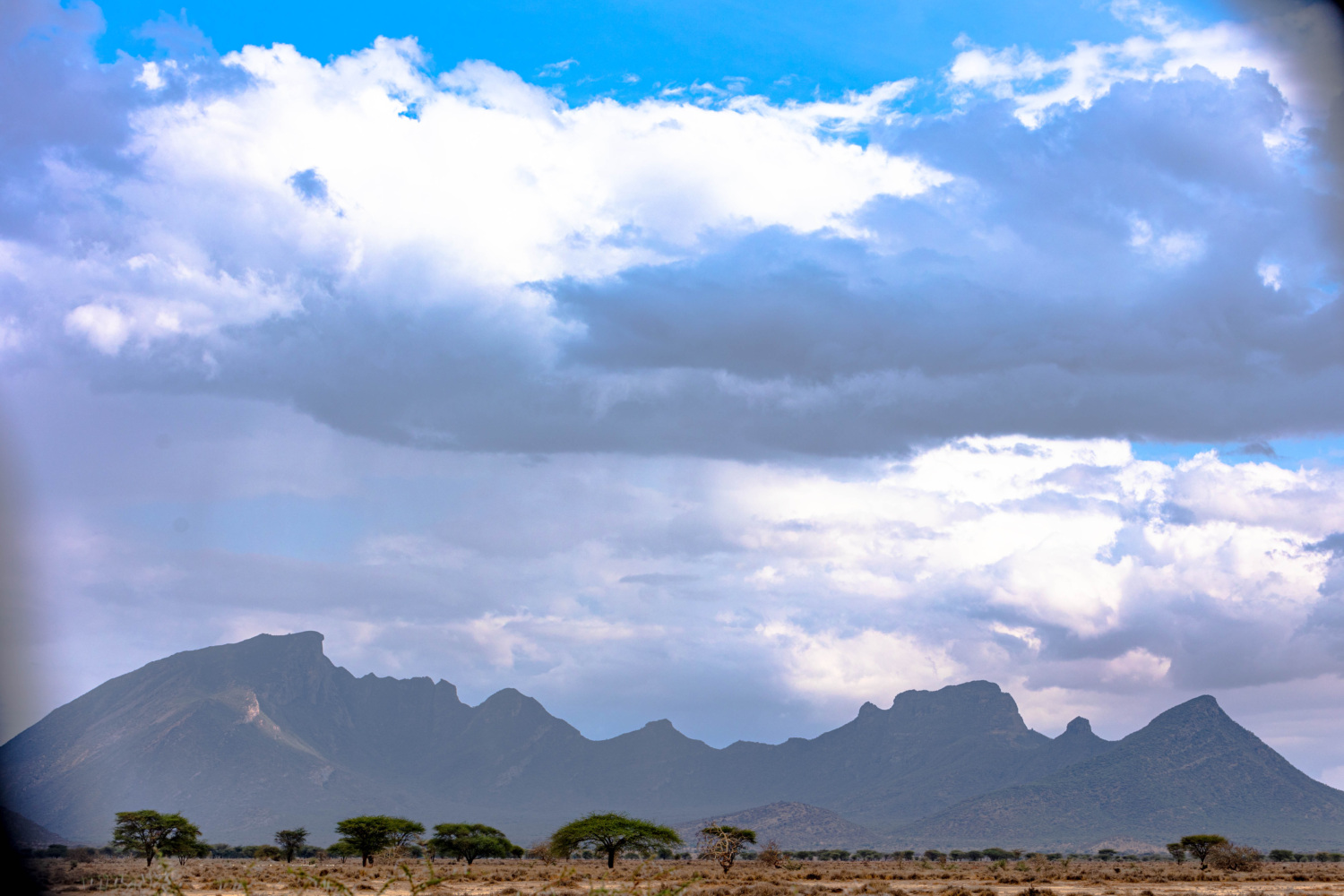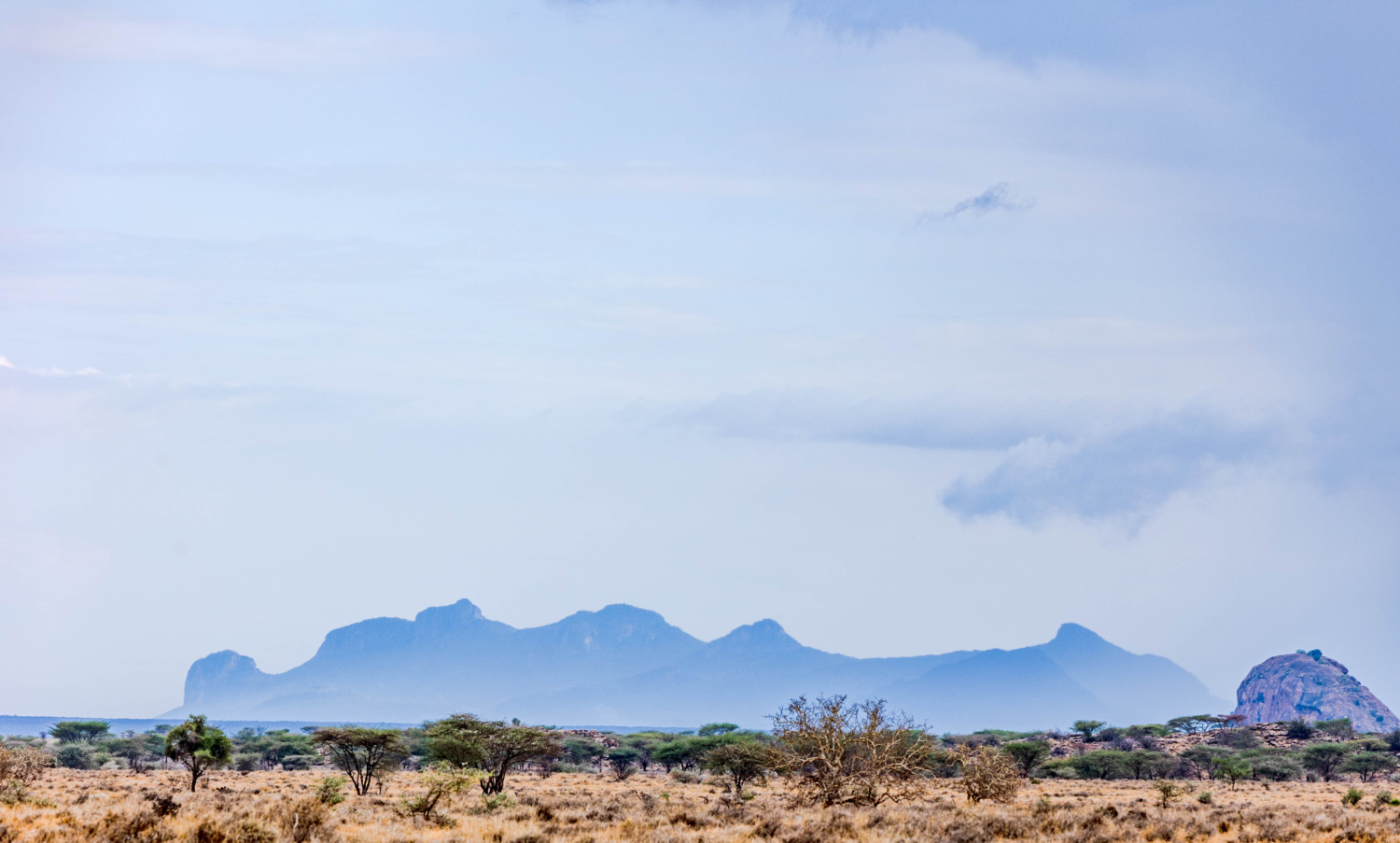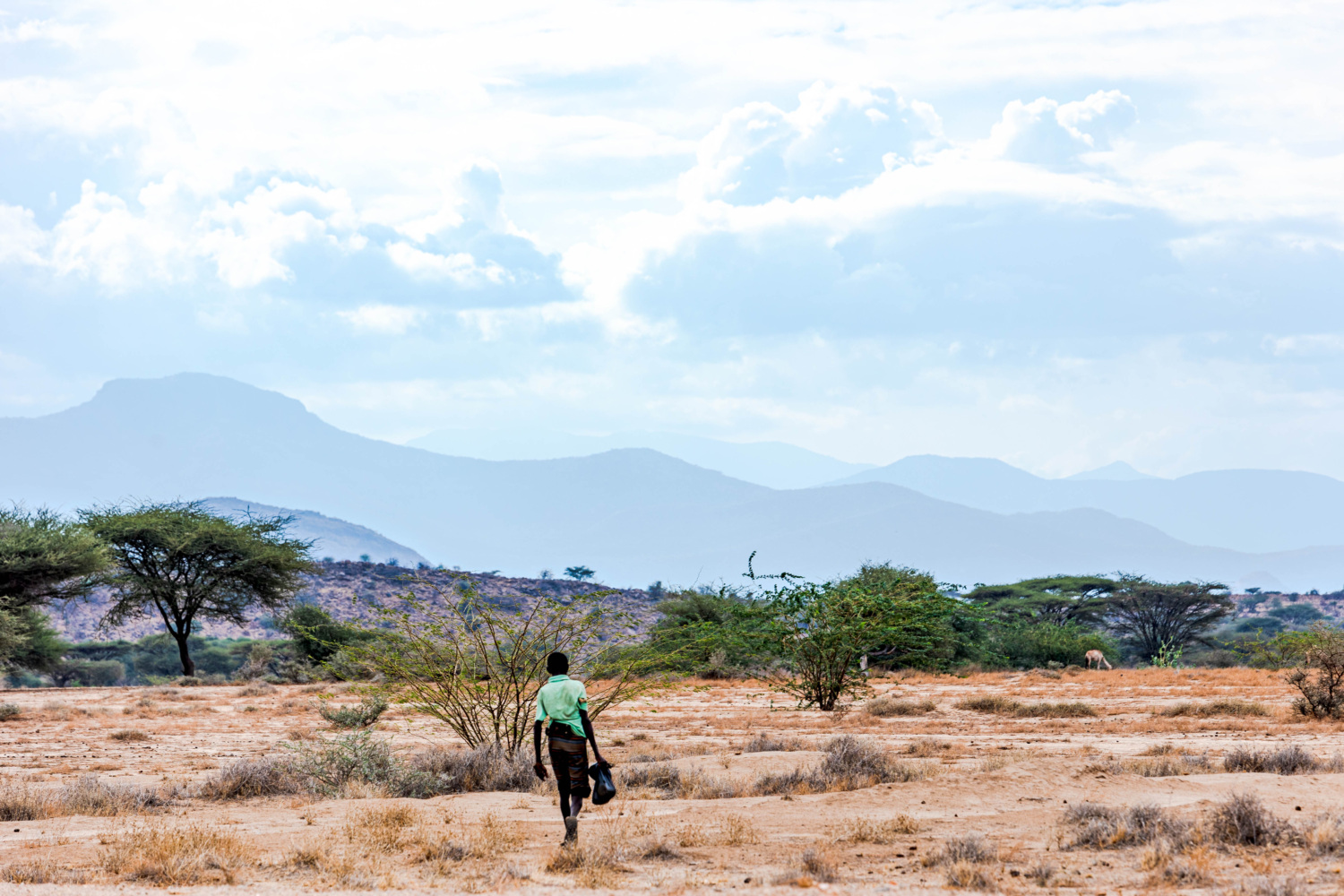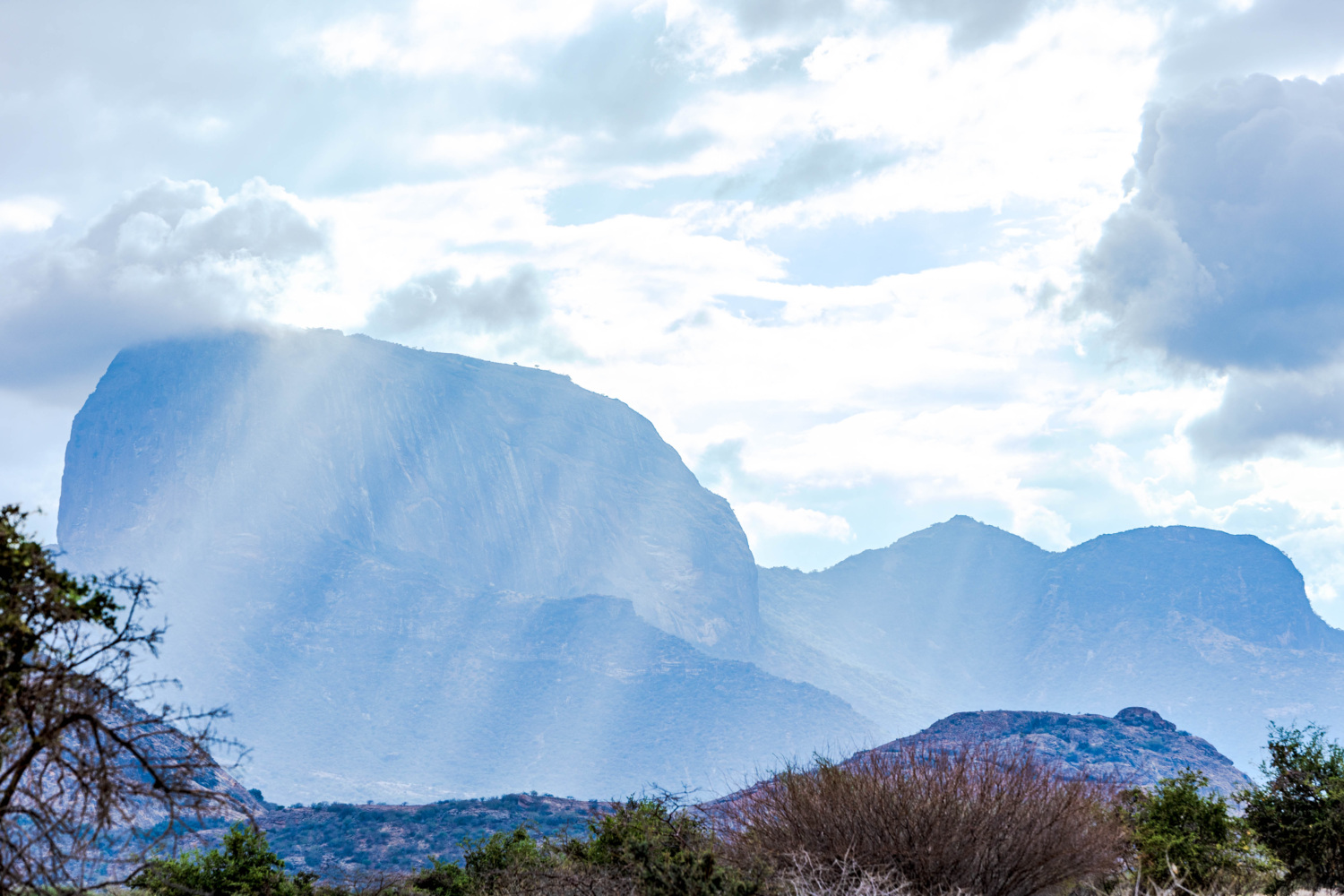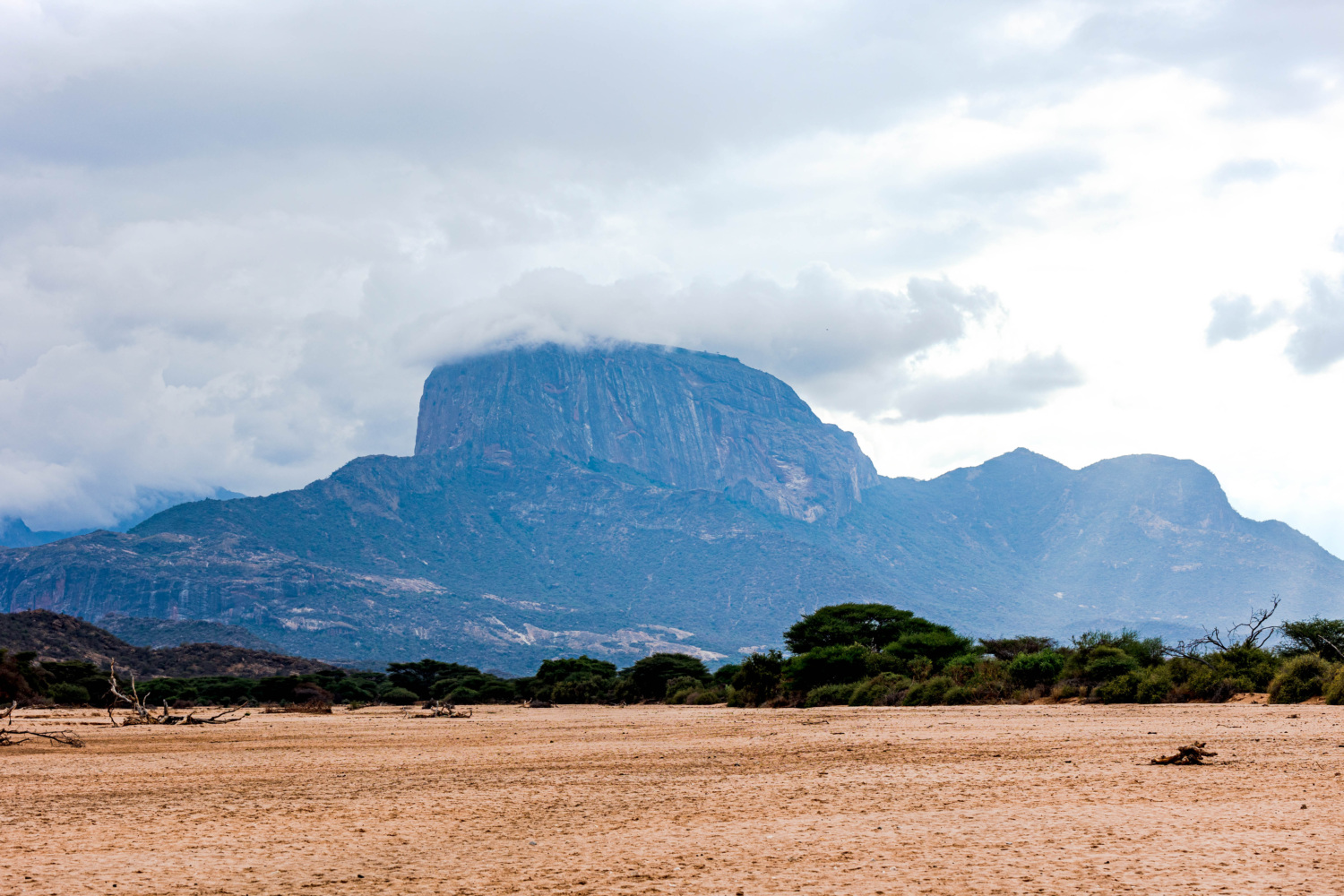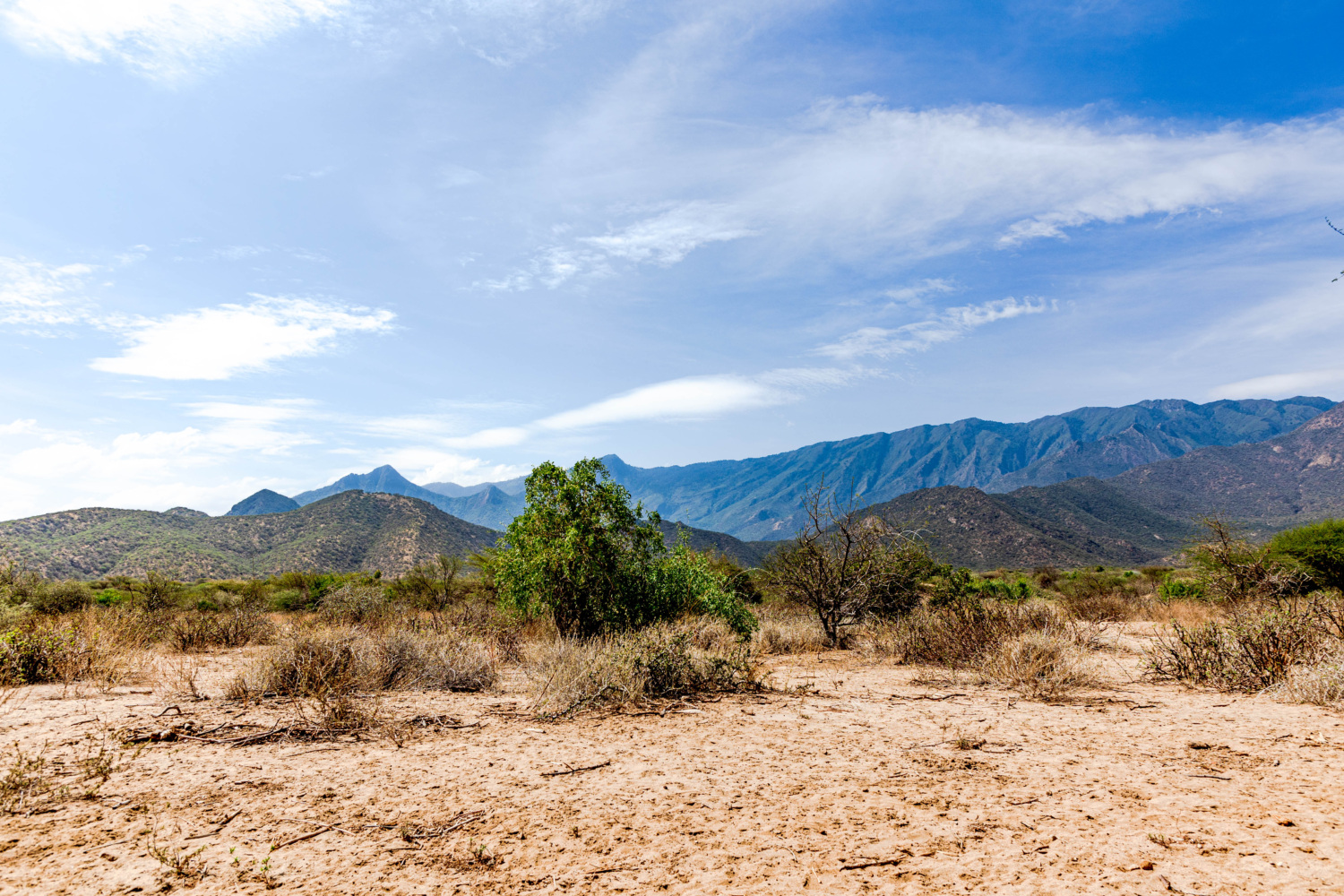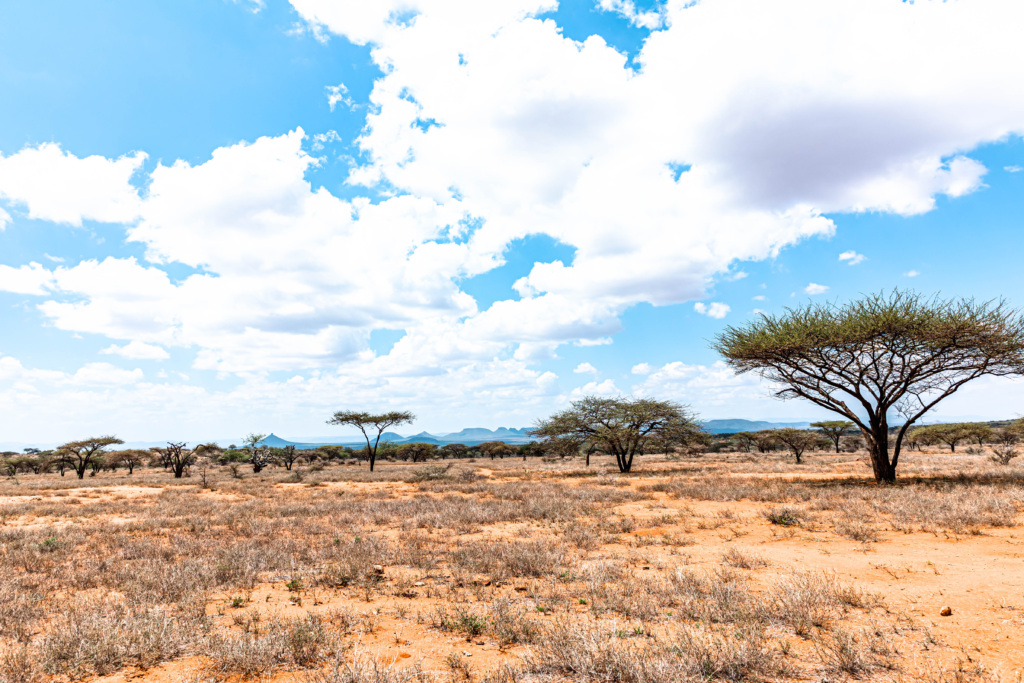
The landscape may at first appear stark, empty, devoid of human activity, but when we looked more deeply, pastoralists abound. A large herd of goats is followed by a young boy moving them around for grazing for his family.
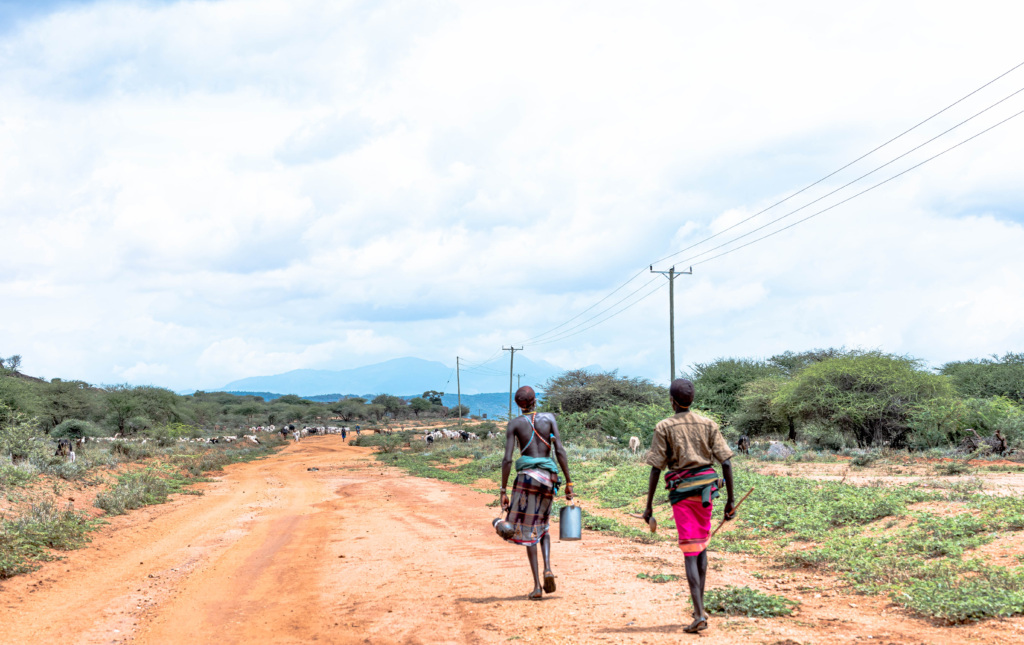
Numerous large camels stride along an empty riverbed, the first one wearing a cowbell, all of them navigated by a man walking underneath the shade of a row of tall Acacia trees.
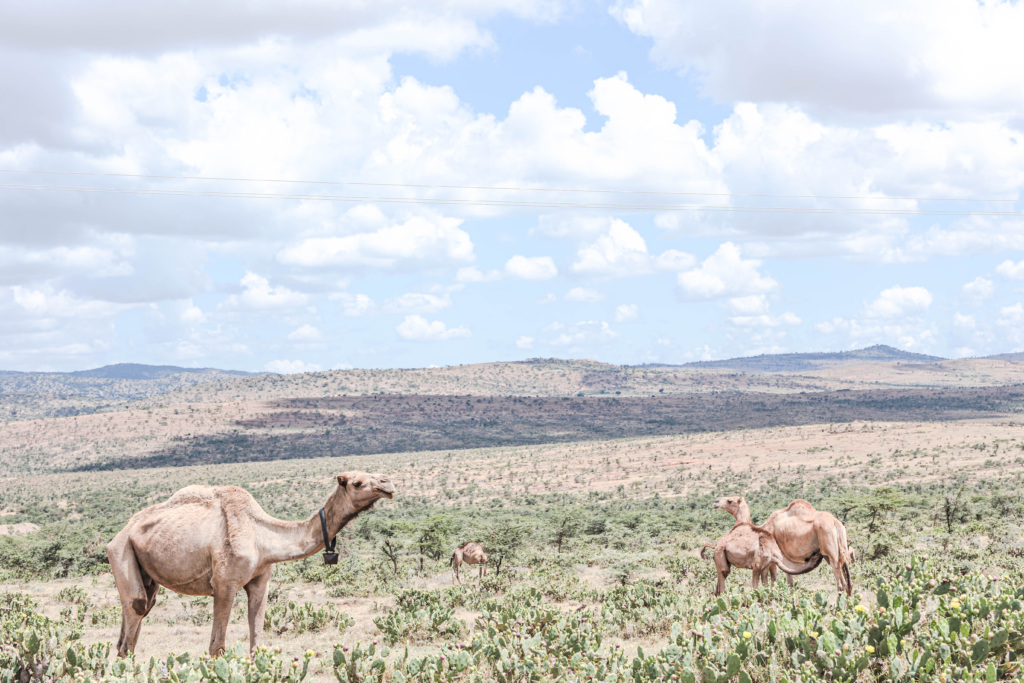
Tiny villages of pastoralist families banding together populate small enclaves of land, remote from big city populations. Soon, once one knows what to look for, one sees all the land is in use, fully, and being well tended by the experts who have been doing so throughout generations.
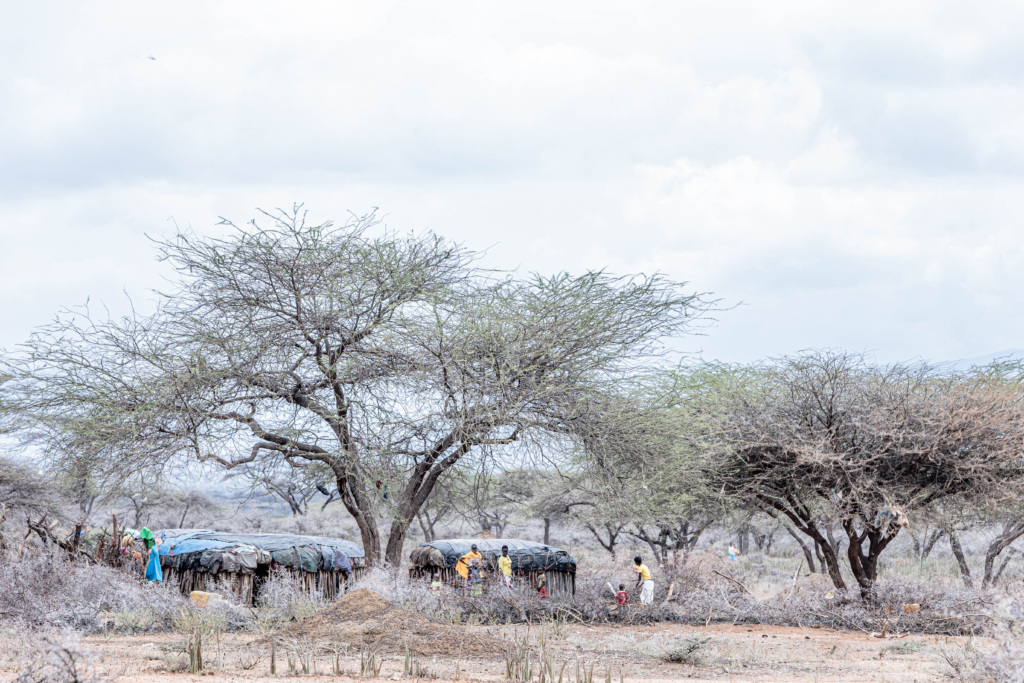
As livestock moves across terrain, they trim plants to help them grow stronger as they graze. Hooves till the ground as they walk, sometimes digging for food, and of course the fertilizer left behind as they graze.
Pastoralists tread lightly, living in balance with the land. Not a single thing is wasted.
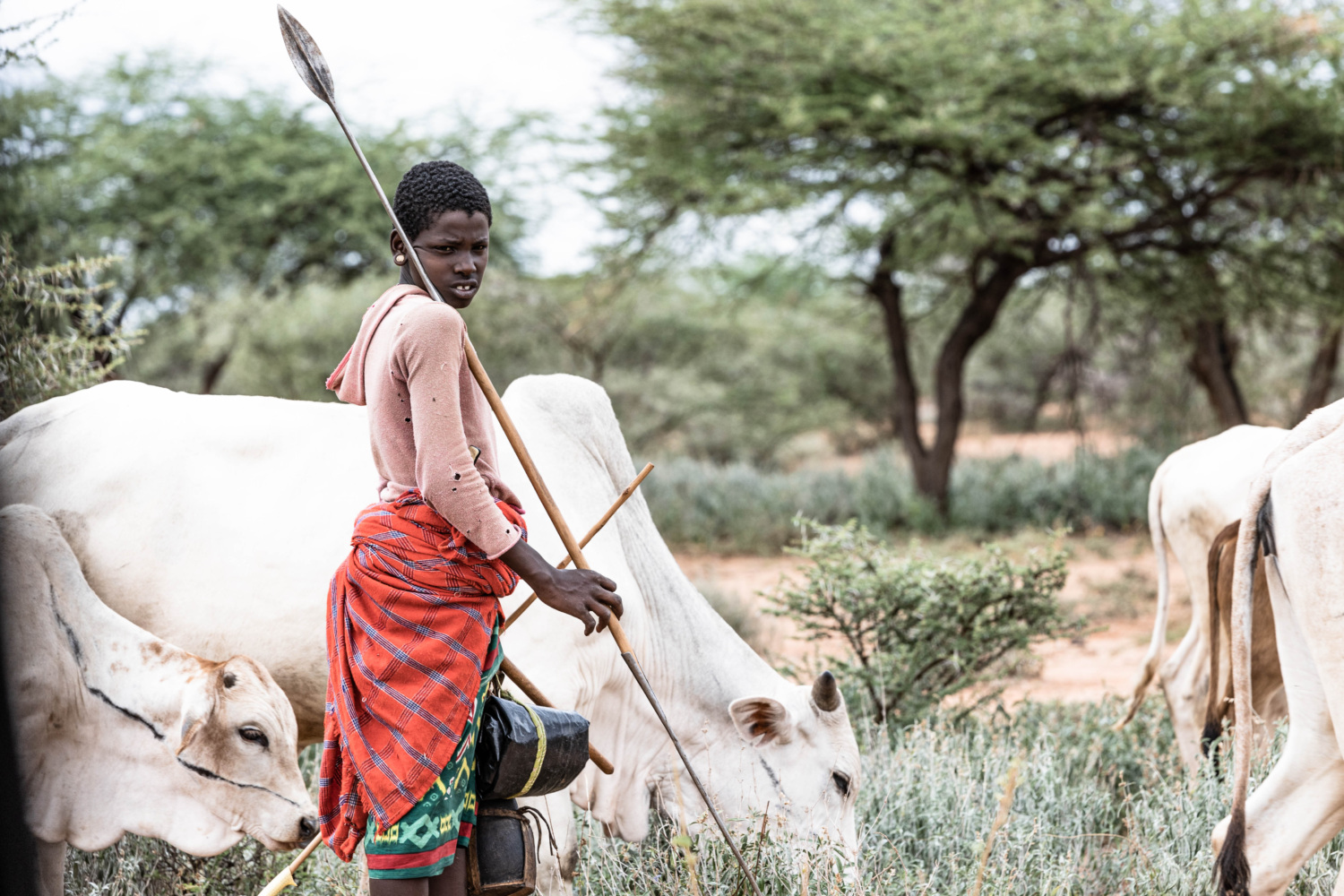
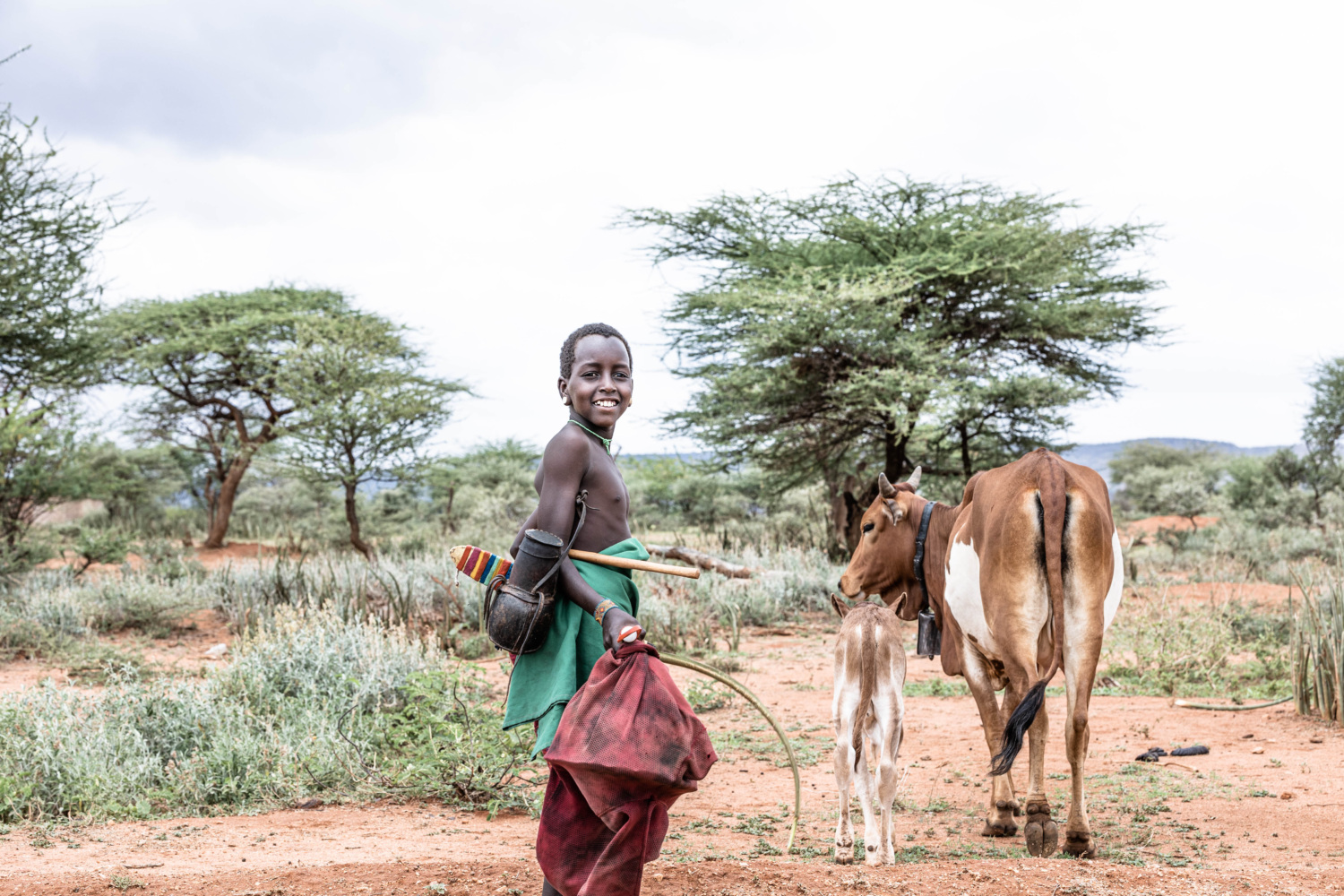
Samburu warriors take cattle out for weeks or months at a time, because strategic mobility of pastoralists and their livestock is important for landscape regeneration. Additionally, they move from one grazing area to the next as they follow the rains. While doing so they carry a stick and/or spear, a small wooden headrest for sleeping, and perhaps a gourd for milking a cow for some sustenance as they navigate the herd.
They take only what the Earth offers, and nothing more. Pastoralists, being semi-nomadic, are often moving, following the cycles of the rain patterns, and quite literally living off the land.
This is the very definition of resilience, and it was being lived before the word existed.
Governments of several East African countries might want to push pastoralists from the land to create space for development, or outside actors want to take the land for “conservation,” but our partners are the true conservationists.
Eventually our small team rolls into the tiny village of South Horr, on the eastern flank of Mount Nyiro, the sacred mountain of the Samburu people of this region of Kenya.
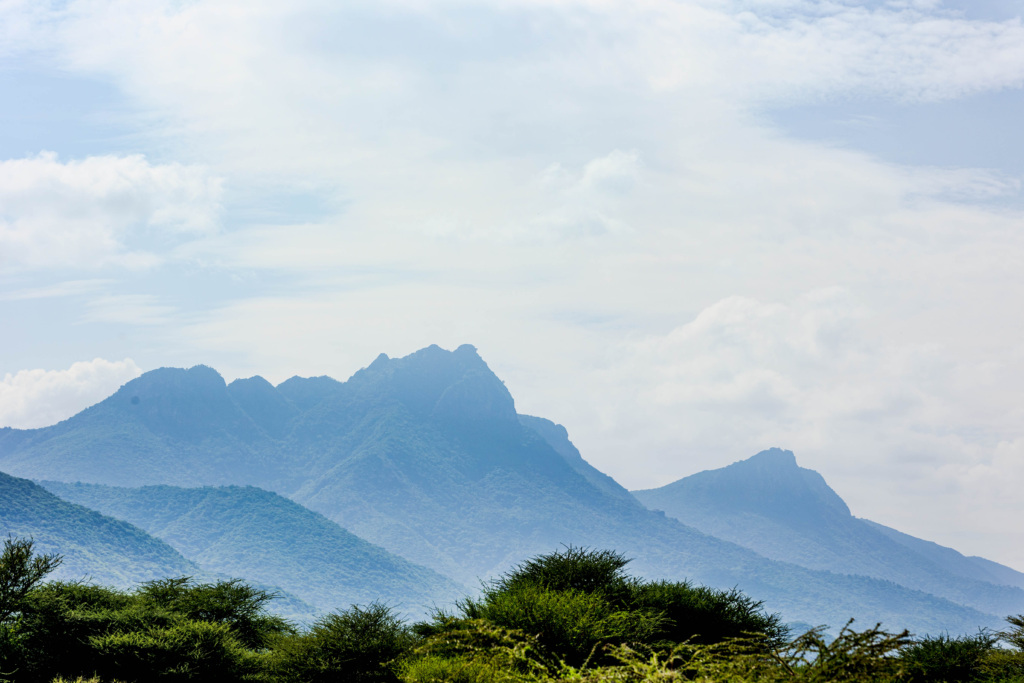
Sitting outside in the village, underneath a papaya tree, the cool evening air is thick with the sounds of crickets, the occasional dog bark in the distance, and muffled conversations from afar. The darker it becomes, the quieter the village.
Sitting nearby under the full moon, Karin Sepeika, Program Manager of Rasimali Sacco of Indigenous Movement for Peace Advancement and Conflict Transformation (IMPACT), is talking on her mobile phone with a reporter. IMPACT is one of Home Planet Fund’s seven partners in East Africa. She begins to explain the importance of the local communities they work with because they are the experts. The reporter is asking her about carbon credits, because these are the most recent threat of exploitation to pastoralist communities.
Our partners in Kenya sequester up to 500 kilograms of carbon per hectare every year. To put this in proper perspective, each human being contains roughly eight kilograms of carbon in our bodies. Our partners, along with other African pastoralists, annually sequester the carbon equivalent of every human being on Earth.
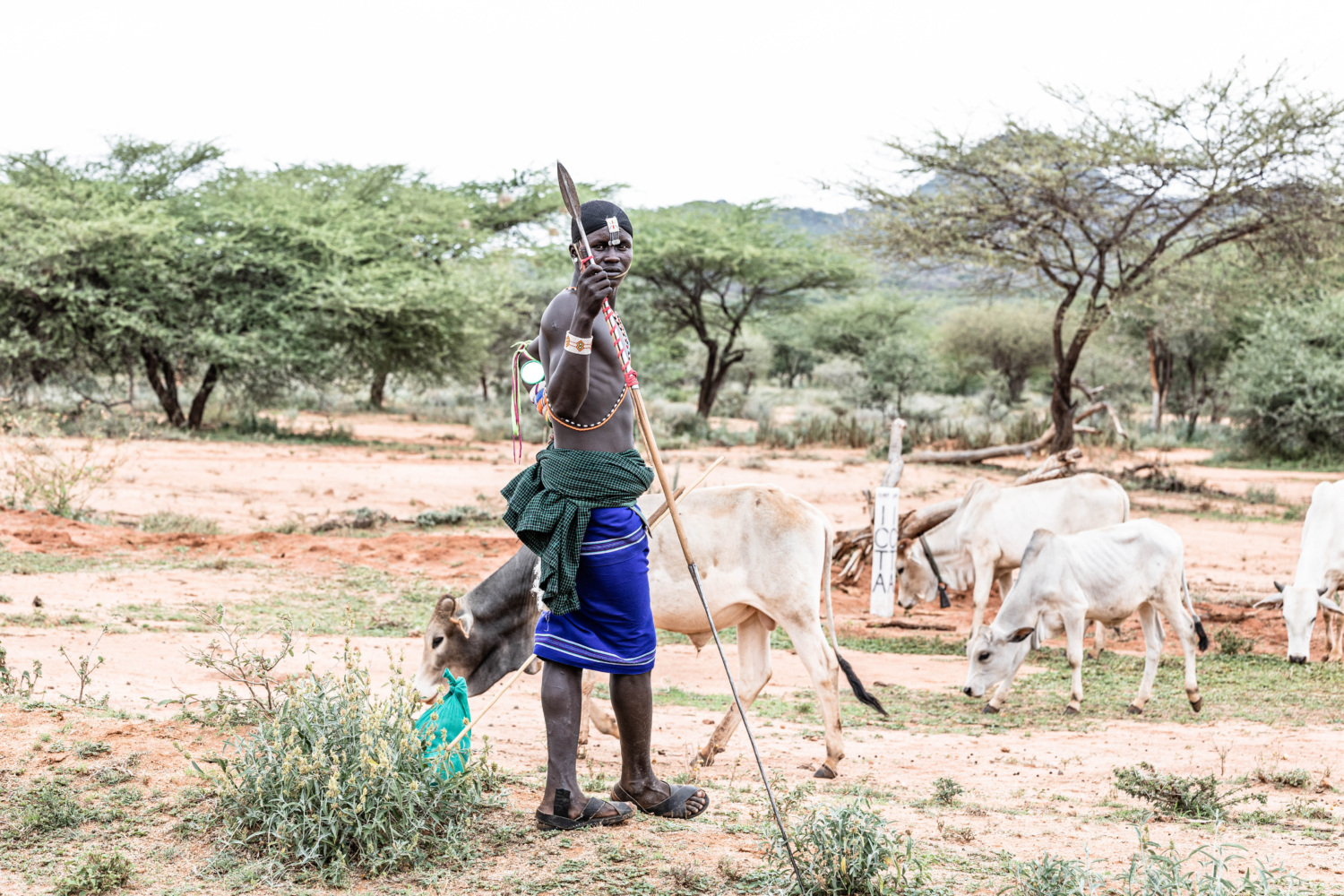
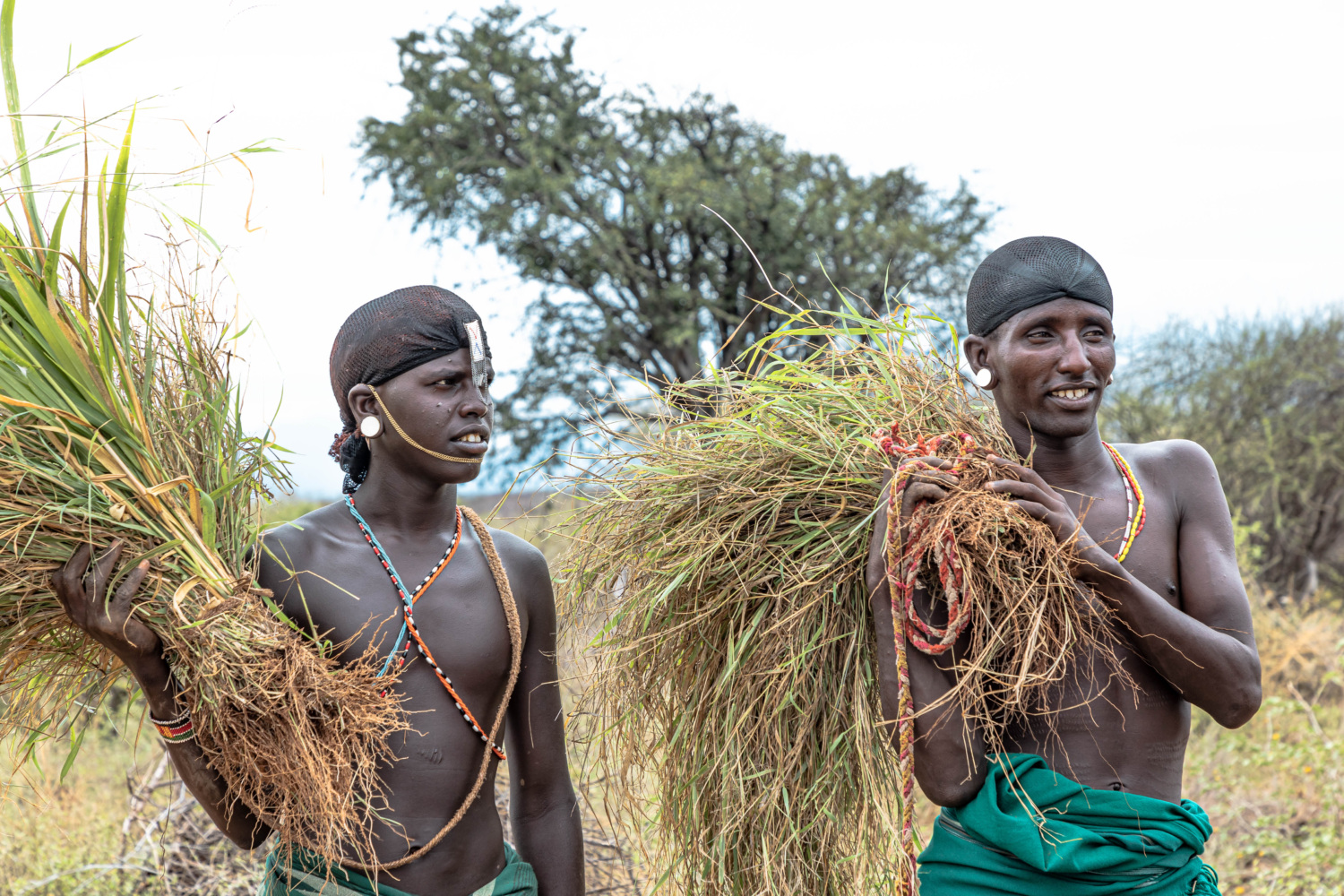
IMPACT is working with pastoralists on many fronts–making sure they are paid fairly in the carbon trading markets, that there is transparency, that everyone understands what is happening around the land dwellers being paid for carbon credits, and that it is being done in a good way. Carbon credits are certificates that represent a reduction in greenhouse gas emissions, and there is an entire financial market around the buying and selling of carbon credits. It is now imperative that pastoralists know how to trade and invest in carbon offset projects, are aware of the policies and regulations pertaining to these projects, and their potential financial benefits so that they are not taken advantage of by big companies entering East Africa’s carbon market.
Danson Ledaany, a paralegal working for IMPACT, sits quietly nearby listening, present if there are any questions.
Nearby the humble guesthouse where we are staying, a blessing ceremony is taking place. The Samburu men in the village are preparing for one of their young men’s rites of passage. One man is calling out a long blessing, speaking quickly and steadily, part by part. The rest of the men rhythmically punctuate the blessing with a simultaneous and staccato “Nkai” chant, at a rhythm equivalent to that of a heartbeat.
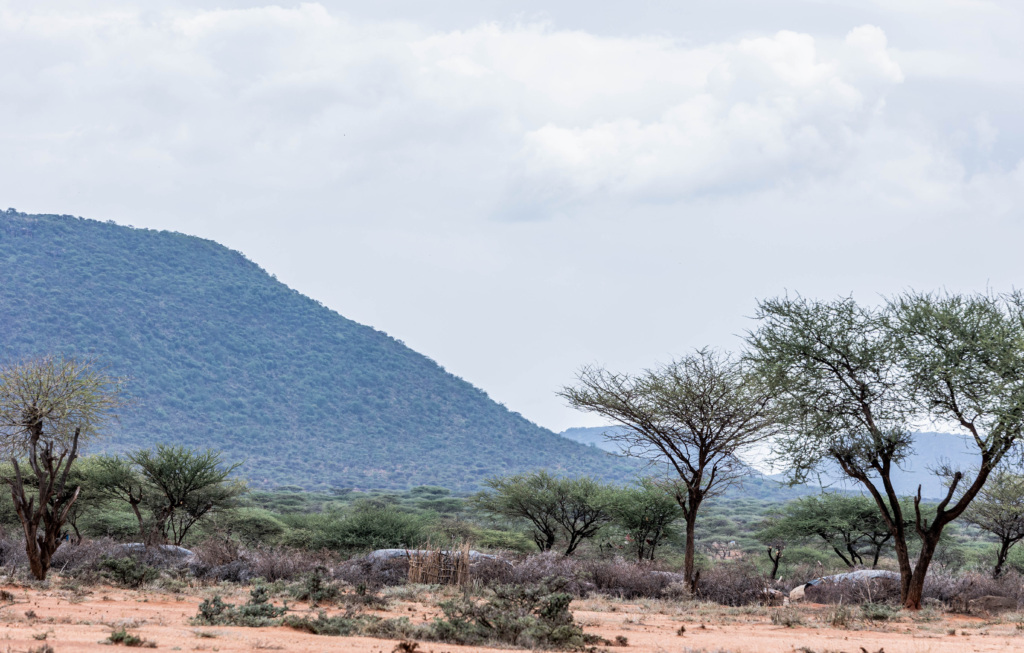
The next morning, the birdsong is thick and constant. It is possible to identify at least 20 different species before getting out of bed.
Goats bleat, children laugh and yell. A dog barks. People awaken and begin to talk. A rooster crows. There are no motors to be heard.
All of these are signs of a healthy ecosystem–as the community, living together on and with the land, is also intact.
This is what it feels and sounds like to be embedded within an intact Indigenous culture. It is alive, vibrant, and strong. The very existence of the Samburu pastoralists comes from and exists with the land, and the land is happy with it.
This is what our partners at IMPACT, who are all pastoralists–Maasai, Samburu, Borana, Rendile and Turkana–are supporting.
And this is why we are supporting them.
We are all in for the Earth.
